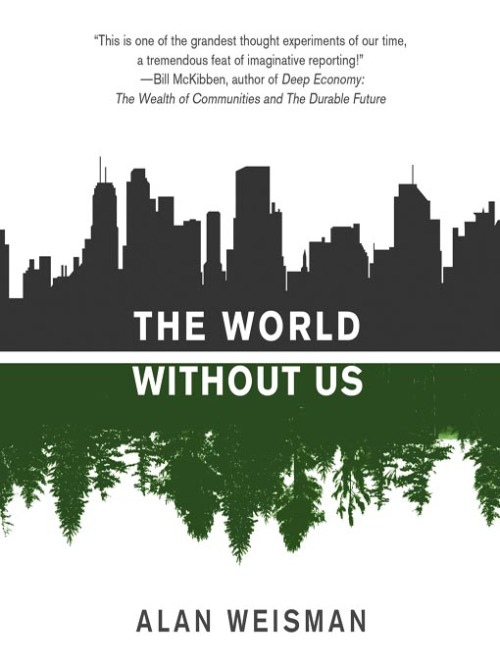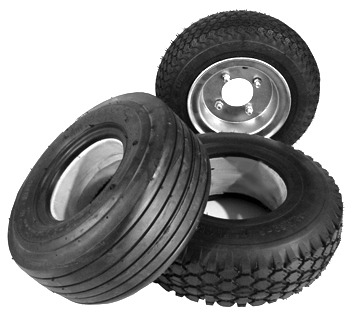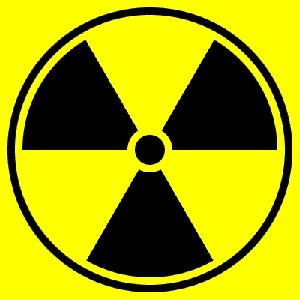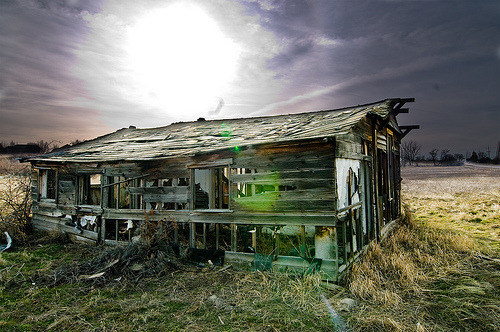 I just finished "The World Without Us" (Alan Weisman) over Thanksgiving break. It's pretty intense.It made me reflect on my own life, beyond design... as a human being. In short, this book is exactly what the title describes—What the Earth would be like if mankind were to leave tomorrow. It talks about all the things that we [man] changed in our environment, and more importantly, what we've left behind.
I just finished "The World Without Us" (Alan Weisman) over Thanksgiving break. It's pretty intense.It made me reflect on my own life, beyond design... as a human being. In short, this book is exactly what the title describes—What the Earth would be like if mankind were to leave tomorrow. It talks about all the things that we [man] changed in our environment, and more importantly, what we've left behind.I'll be honest, this book made me feel naive—I had no idea about some of the things going on in this world. Weisman covers a lot of ground, so be prepared for a journey. If you want to step out of the fire and right into the frying pan, I recommend skipping the first 1/3 of the book, and start on chapter 9, "Polymers Are Forever". From that point, it gets interesting and challenging—everything prior was just setup, and a little boring.
I can't cover all the stuff Weisman talks about, but I can share 5 points I took away from this book:
 1. The North Pacific Gyre (aka "Garbage Patch") was created in the last 50 years(wikipedia link)
1. The North Pacific Gyre (aka "Garbage Patch") was created in the last 50 years(wikipedia link)It's twice the size of Texas, made up of over 100 million tons of marine litter. What kinds of litter? Mostly plastic bags and nurdles suspended beneath the surface of the ocean. What's crazy is that it continues to grow. Unlike global warming (which is caused by several sources), it's clear where the plastic is coming from in the ocean. The environmental impact is easily seen when we observe larger animals (like fish and birds) dying from eating it. But what's more alarming is that when the plastic breaks down to smaller pieces, smaller organisms (like krill) and micro-organisms can't digest it either, causing them to die as well. When you kill off these smaller organisms, it disrupts everything. I went online to see if anyone was working on cleaning up this mess, it seems that money is our blocker. We don't have enough money to scoop up all the garbage. And even if we did, where would we put all it? Most of the garbage would end back up in the ocean anyway. What's most scary is that The North Pacific Gyre is not alone... there are several other places that have this exact same problem. While I love looking at different environmentalist renderings of architecture made from recycled Pacific garbage, it probably won't happen simply because of cost.
 2. Polymers last forever.
2. Polymers last forever.Plastics will never naturally break down... they'll be with the earth until the end, unless some micro-organism comes along, specially evolved to break it down. What's wild is that we produce so much plastic every day... and it's not just plastic, it's polymers. Strong polymers like rubber are extremely difficult to break down. Actually, I recently discovered that rubber is a single molecule. Rubber will be around forever... unless it's exposed to UV rays. Notice how PVC breaks into brittle pieces when exposed to sunlight. The problem is that most plastics are a) being mixed and coated with UV blockers, and b) most plastics are buried underground or are underwater. Without any form of weathering or UV light, a lot of these polymers are here to stay.
 3. Nuclear waste is melted down in glass cubes, and buried in mountains.
3. Nuclear waste is melted down in glass cubes, and buried in mountains.We're not just talking about nuclear waste from power plants... we're talking about nuclear stuff that comes from our missiles. That stuff has been melted down and impregnated into glass, formed into cubes. These cubes are stacked, buried beneath thousands of layers inside some off-limits mountains. What's even crazier is that these cubes are burning hot, since they're still decaying. Some of the nuclear substances have half lifes of over tens of thousands of years. This stuff is so dangerous that we've buried it with stones, engraved in several languages, warning future generations to stay away. Think of all the established cultures have disappeared like the Mayan civilization. Imagine if they had a nuclear waste deposit, and we came across it today. The scary thing about nuclear waste is that you don't usually see the effects until the next generation. Things stop reproducing correctly when exposed.
 4. Most houses that we live in won't last for even 50 years.
4. Most houses that we live in won't last for even 50 years.If you think about it, most houses will fall apart, starting with the roof after a decade or two. If we don't maintain the house, our environment, our land, it will all be taken over by nature again. I was driving by some broken down houses on my way back, and realized that our homes are really fragile. A little water leak causes dry wall to fall apart. If you think about it, there are Japanese castles, Egyptian temples, and Chinese walls that have stood up to a millennia of weather, climate shift, and sun. There's not much design or engineering like that anymore.
 5. Huge mega-cities like New York will fall away from the bottom up.
5. Huge mega-cities like New York will fall away from the bottom up.Cities made of concrete and steel should last forever... but they won't. Ironically, a city like New York will cave in because of water. There is so much run off from the city that water has to be pumped out of tunnels, sewage, etc. 2 inches of rainfall can cause subways to shut down. There are pumps constantly running. If man were to go away, no one would produce power, maintenance the water flow, etc. Things would explode from bottom up, flooding everything, then weakening it. Eventually New York would crumble from the bottom. According the Weisman, it wouldn't take that long either. Without the trees and soil to naturally absorb the water, it would just flood the city, causing it to ultimately cave in. New York is not the only city that would suffer this. Think of the Panama Canal—The man made canal that cuts through a continent to connect the Pacific and Atlantic ocean together. This is an incredible man-made feat, but it would all give away if no one was there to repair and regulate it. No city, concrete or steal will be sheltered... or at least, that's what Weisman suggests. It's hard to imagine, but when you think about it... it's not far fetched.
So, this is just a sample of highlights I've gathered from this book. I've stayed up thinking about more... and a couple questions strike me:
What can we do as individuals to make a difference? Do have little to no impact?
What can we do as designers (dealing with mass production of these materials) to make a difference?
In the end, what do we leave behind other than DNA, a grave stone, and toxic waste?
The last one has left me searching and restless. It seems that a few of my friends in the same age group are struggling with the same thing. These are good topics to think about and discuss openly. Read a sample of "The World Without Us" here. PS. Thanks Josh for sharing this. It was a great piece, and I look forward to your other suggestions, "The Long Emergency" and "Botany of Desire". We have much to talk about.
 is a journal by
is a journal by 









No comments:
Post a Comment